
Recent Research Projects
I have completed many research projects that center around the role of media in multicultural music education, technology incorporation in music teaching, and music cognition in music education. Through these studies, I aim to bridge the gap between music education theory and practice, equipping educators with innovative approaches to foster inclusive, engaging, and pedagogically sound music instruction.
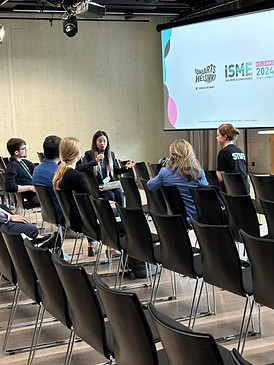



The Role of YouTube in Preserving Taiwanese Folk Songs: A Music Educator’s Experience and Perspectives
Abstract
This case study (Stake, R. E., 1995; Yin, R. K., 2009) explores how a music educator utilizes YouTube to preserve Taiwanese folk songs and investigates the phenomenon emerged from this endeavor. It employed an interview method (Stake, R. E., 1995; Yin, R. K., 2009) and material culture analysis (Miller, D., 2003). The participant of this study was Yi-Chih Lu, a Taiwanese pianist and college music educator who has arranged and published more than 13 Taiwanese folk songs to a worldwide audience. We analyzed his Taiwanese folk song arrangements on his YouTube channel, the programs that supported his works, and the Taiwanese folk song arrangement sheet music. Additionally, the study demonstrated the factors that influence the preservation of Taiwanese folk songs through YouTube, emphasizing the value of multiple epistemologies and diverse voices facilitated by the platform.
The findings showed that YouTube played various roles in preserving folk songs, including promoting folk music, serving as a marketing tool for music, and implementing cultural preservation programs. Specifically, YouTube enhanced audience’s experience and promoted Prof. Yi-Chih Lu’s arranged folk songs, reaching a total Taiwanese folk song viewership of 503,080 (Lu, Y.-C., 2008). Moreover, many students took piano lessons with Pro. Yi-Chih Lu because of those videos. Many people also played Prof. Yi-Chih Lu’s arrangements and uploaded their videos onto YouTube.
However, the length of YouTube videos might have influenced art development. For example, the short length of YouTube videos reduced people’s attention span, which may, in turn, make it difficult for people to fully appreciating artworks. Also, the YouTube algorithm could present an emerging challenge for musicians and music educators because it may amplify inequality by disadvantaging those less familiar with digital technologies, affecting the equitable access to these musical cultures. Therefore, music educators should consider access issues when relying on YouTube in their teaching. Additionally, policy makers should advocate for algorithm transparency to promote diverse and equitable access to different musical cultures via YouTube.


The Role of Pitch Imagery and Attentional Flexibility in Measures of Musicianship Skills
Abstract
This research project investigated the relationship between pitch imagery and attentional flexibility in the development of musicianship skills. Through measurement tools and assessments, this study examines how these cognitive abilities interact and contribute to musicianship. Findings showed that there is significant relationship between pitch imagery and attentional flexibility. This research study also offered insights into effective music training strategies, particularly in enhancing aural skills and cognitive adaptability among musicians.
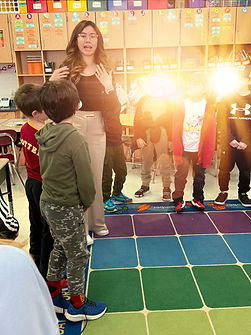

Social Emotional Learning in Second Grade Opera Classrooms
Abstract
This study explored the integration of Social Emotional Learning (SEL) in second-grade opera classrooms, examining how music education fosters elementary students' emotional awareness, empathy, and collaborative skills. This study employed a multiple case study methodology to explore how opera-based activities—such as role-playing, storytelling, and group performance—support SEL competencies, including self-regulation, social awareness, and relationship building.
Findings aim to provide insights into how early childhood music education can serve as a platform for SEL development, offering strategies for educators to create emotionally supportive and expressive learning environments through opera.



A Literature Review on the Role of Media in Multicultural Education in Elementary Music Classes
Abstract
With the increasing use of technology in classrooms, there has been a significant shift in the socio-cultural landscape (Mroziak, 2019). Music educators can access rich media that are appropriate for use in learning activities aligned with the historical and cultural context of music in responding to music (Bauer, 2014, p.103). Based on the background, this literature review presents the role of media in culturally responsive teaching, including its rationale, the media usage, the emerging challenges, and a need of future research.
Media has been proposed in various capacities to meet the needs of students from diverse backgrounds and with different individual needs, such as presenting musical content knowledge (Lum, 2017), composing (Woody & Fredrickson, 2000), and uploading students’ music for display purposes (Gall, 2017). Music educators are also suggested to utilize media and portfolios as an assessment tool to create a dynamic and personalized learning experience (Tobias, 2016, p.136). Additionally, for English language learners in music class, educators should incorporate activities where students can demonstrate their achievement of learning outcomes through videos or other media, rather than relying solely on written assessments (Eros and Eros, 2019, p. 569).
However, although media has the potential for enhancing cultural diversity, the images and stories portrayed in the media often conflict with the values that educators aim to teach (Gay, 2000). For example, negative stereotypes conveyed through media can also lead to self-doubt, uncertainty, and diminished self-esteem, which might create significant barriers to educational achievement (Gay, 2000). These stereotypes, perpetuated by the media, not only affect how others view these students but also how they perceive themselves, often undermining their academic performance (Gay, 2000).
Because the impact of media representations is profound in shaping individuals’ identities and self-perceptions (Gay, 2000), music teachers’ role of using media is influential in shaping cultural understanding (Väkevä, 2017). Music educators should critically and creatively use media in the classroom to enhance learning by connecting with students' cultural experiences and interests (Mroziak, 2019, p.233). Furthermore, because music teachers’ media utilization and attitudes have a significant influence on students’ perceptions of both cultural and technical understanding (Mroziak, 2017), there is a need of examining music teachers’ perceptions of using media in culturally responsive teaching. To address this issue, an exploration on music teachers' media literacy (Scheibe & Rogow, 2012; Sperry & Scheibe, 2022) and the ways they use in introducing diverse music cultures are crucial, as it equips them with the skills to critically analyze and counteract negative media stereotypes (Scheibe & Rogow, 2012; Sperry & Scheibe, 2022).

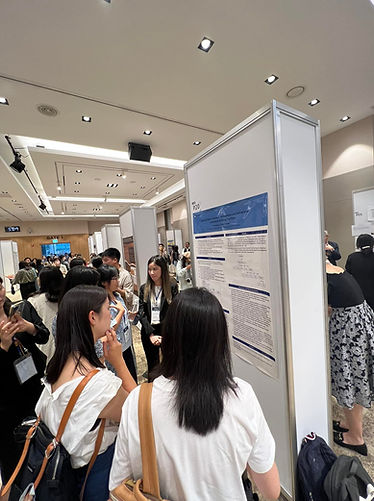
General Music Teachers’ Perceptions and Behavioral Intentions of Using YouTube
Abstract
YouTube has the potential for teaching music and cultures, offering resources for enhancing the teaching contents. Music educators have increasingly recognized the importance of their technological competence, yet they may still find challenges in its practical application. The purpose of this study was to investigate elementary general music teachers’ behavioral intentions and perceptions of using YouTube in their classrooms. The survey was designed based on the integration of the two models, including the Unified Theory of Acceptance and Use of Technology model (UTUAT) and Technological Pedagogical Content Knowledge model (TPACK). We employed a survey method and analyzed the teachers’ perceptions and intentions by using Structural Equation Modeling (SEM).
Results showed that the technological competence of general music teachers in using YouTube significantly influenced their personal beliefs. Furthermore, these individual beliefs appear to directly shape their behaviors concerning technology utilization. Interestingly, elementary general music teachers’ technological competence did not directly influence behavioral predictions.
From the insights gained through our research, we propose structured training opportunities for music educators. These sessions may bolster their technological competence, encompassing areas like Digital Audio Workstations (DAWs), online pedagogical tools, and other musical technologies. As an illustration, teachers may want to extract hip-hop resources from YouTube, seamlessly transition them into DAWs, and subsequently guide students in weaving compositions enriched with hip-hop nuances.

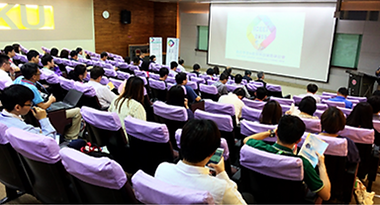
A Preliminary Study on Computer-Based Music Learning Applications: A Case Study on “Taipei City Teaching Application Mall”
Abstract
With advancements in technology and reforms in the 12-Year Basic Education Program, teachers are encouraged to adopt innovative teaching methods. As computer-based music instruction gains attention, this study analyzes music teaching applications (APPs) on the "Taipei City Teaching Application Mall" website, exploring their role in integrating technology into music education.
Implementing content analysis methodalogy, this study examines music teaching APPs through a new classification developed by the researcher, assessing their function, characteristics, and usage. Results indicate that the music teaching APPs on the "Taipei City Teaching Application Mall" are less likely to support users in achieving ""analyzing, differentiating, organizing, attributing"" and ""evaluating, inspecting and criticizing""-related educational goals.
As of the completion of this article, most of the APPs listed focus on "memorizing, recognition, recall" and "understanding, interpreting, exemplifying, classifying, integrating, reasoning, comparing, explaining"-related goals. Most APPs merely focus on teaching content but lack complete teaching processes, such as teaching evaluation. Therefore, if music teaching APPs include teaching assessment functions, they will render the music teaching processes more convenient and complete and may provide more assistance to music teachers. For example, these APPs may provide formative assessments of music teaching to track learning progress.
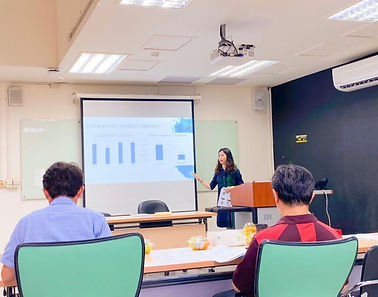
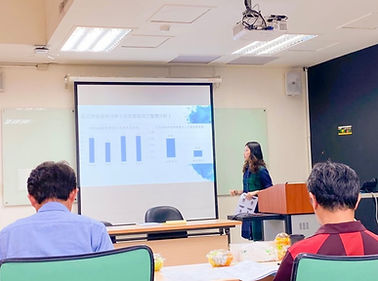
A Study on STEAM Education and the Integration of Music and Technology Interdisciplinary Learning (Unpublished Master’s thesis)
Abstract
This study examines the conformity and student acceptance of STEAM education and music-and-technology-integrated learning through a self-constructed questionnaire administered to eleventh- and twelfth-grade students in Taipei City. Statistical analyses, expert validations, reliability tests, variance analyses, and paired sample t-tests were conducted on the collected data.
Findings reveal that conformity levels in both STEAM education and music-and-technology-integrated learning are generally low to medium, with "Student-Centered Education" and "Software Application" ranking highest, while "Horizontal Integration" and "Concept Learning" are lowest. Acceptance levels are mostly medium to high, with a significant gap between acceptance and actual conformity, particularly in "Horizontal Integration" and "Software Application." Background factors such as district, parental support, and access to technology influence both conformity and acceptance levels.